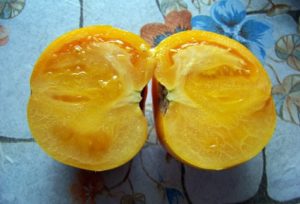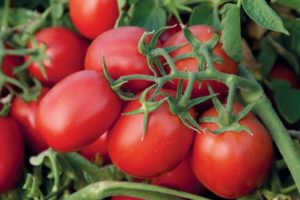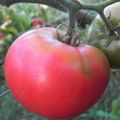Characteristics and description of the Pink Claire tomato variety, its yield
Tomatoes are a versatile vegetable, without which almost no preservation recipe for the winter can do. Tomato Pink Claire is perfect for those gardeners who prefer to grow large-fruited pink varieties.
Description of the Pink Claire tomato variety
Pink Claire F1 belongs to the first generation hybrids and was bred by breeders from Israel.
The tomato is indeterminate, characterized by unlimited growth of the main stem and can reach a height of more than 2 m. The root system is powerful, highly developed. The bush itself is abundantly leafy, tops of a dark green hue. The internodes are short. To accelerate the onset of the formation of ovaries, it is necessary to remove the lateral shoots (pinch).
The tomato is an early ripening variety. From the moment the seeds are sown to the appearance of the first red fruits, it takes from 90 to 95 days. Very productive. One cyst can grow from 4 to 6 tomatoes.
The main characteristics of hydride are drought tolerance, tolerance to sudden changes in daily temperature.
This variety favorably distinguishes from other varieties of tomatoes by immunity to diseases such as tobacco mosaic, verticillium and fusarium wilting of bushes. The hybrid is not resistant to the rest of the diseases of nightshade crops, therefore, Pink Claire tomatoes need to be timely preventive procedures.
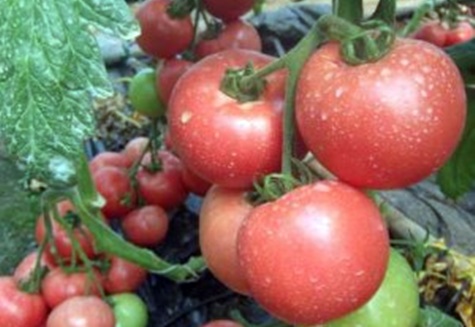
The plant is suitable for growing outdoors, in greenhouses and greenhouses.
Characteristics of Pink Claire fruits
Before buying planting material, it is very important to study a detailed description of the tomato variety, and first of all, the characteristics of the fruit.
The first generation hybrid belongs to large-fruited pink varieties. The weight of a ripe tomato can reach 180 -300 gr. The shape of the fruit is oval. Slightly flattened at the top. The pulp is tender, juicy, rather sweet. The skin is dense, smooth, does not crack. There is a small green spot near the stalk.
Throughout the entire period of fruiting, tomatoes do not become smaller. Pink Claire hybrid is distinguished by high taste of fruits.
With proper care, up to 7 kg of tomatoes can be harvested from one adult bush.
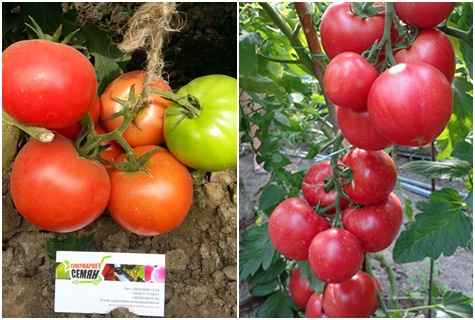
A variety of universal use. Ripe fruits can be eaten whole or added to salads fresh. Ideal for whole preservation. It also makes delicious tomato juices, lecho, salads and sauces.
Ripe tomatoes tolerate long transportation well and are well suited for sale.
Pros and cons of tomato
The reviews of those gardeners who grew the hybrid in their area are generally positive.But despite its many benefits, there are several disadvantages to the tomato to be aware of.
Advantages:
- Good harvest throughout the entire fruiting period;
- Resistant to tobacco mosaic and shrub wilting;
- High palatability of fruits;
- They tolerate transportation well;
- Universal use in cooking;
- Drought resistance;
- You can grow seedlings in open and closed ground.
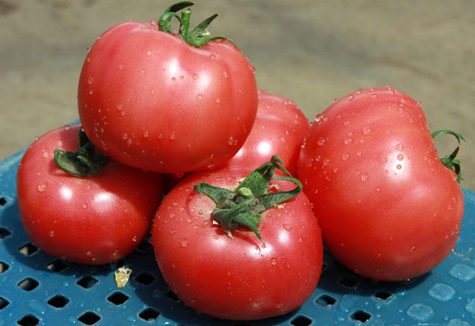
Disadvantages:
- Susceptible to some diseases of nightshade crops;
- The bush must be formed;
- A garter of the plant to the support is required;
- It can give a stable harvest only on fertile soils.
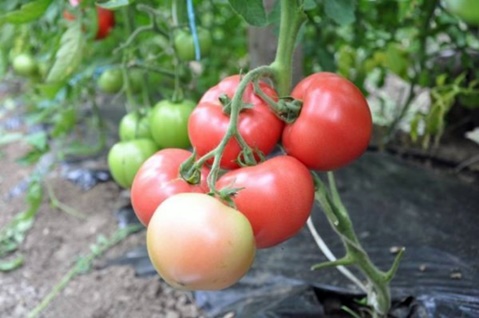
Features of growing and caring for a tomato
The Pink Claire tomato is distinguished by its unpretentious care, but in order to increase yields, it is necessary to follow some rules of agricultural technology.
First of all, special attention should be paid to growing seedlings. You need to sow planting material in the second half of February or the first half of March.
As mentioned earlier, this tomato variety can give a stable harvest only on fertile soils. If the soil is not sufficiently enriched with useful substances, then before planting the seedlings in a permanent place, it is necessary to add manure, bird droppings or mullein solution to it.
Since mature bushes are very tall and spreading, the distance between plants should be at least 60 cm. This distance will be optimal so that the bushes do not interfere with each other. It is advisable to plant seedlings in the places where zucchini, herbs, onions, garlic and legumes used to grow.

The second important point is leaving. It includes:
- Weeding and weeding;
- Watering;
- Application of mineral and organic fertilizers;
- Prevention against diseases of nightshade crops.
Particular attention should be paid to watering. If it is too frequent, the tomatoes will be watery and tasteless. Watering the bushes will be enough 2-3 times a week. If the weather is rainy for a long time, then watering can be stopped for a while.
You need to water the bushes in the evening, when there is no scorching sun rays. Such a measure is necessary so that burns do not appear on the tops. Plants should be weeded once a week before watering.
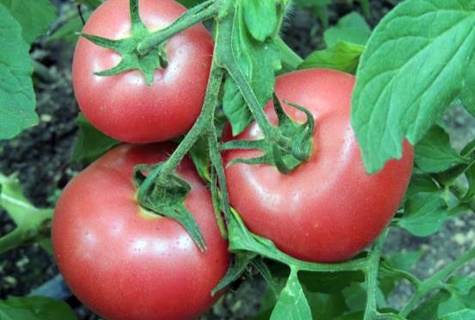
In order for tomatoes to grow well, they need to be fed regularly. For the entire fruiting season, at least three dressings should be applied. The interval between fertilization is 14 days.
For the first feeding, bird droppings diluted in 10 liters of water are suitable. You can also use ammonium nitrate, superphosphate and potassium chloride (in a ratio of 20:55:35 per 10 liters of water).
The second top dressing is 1 liter of mullein infusion, 25 grams of superphosphate and 2 tsp. wood ash. You need to bring in at the root.
For the third feeding, you can use the following composition: 3 tbsp. l. wood ash, 25 g of superphosphate and 0.5 g of manganese sulfate.

When applying mineral and organic fertilizers, it is important to pay attention to the appearance of the tomatoes. If it grows poorly, and the ovaries are practically not formed, then the amount of dressings can be increased. If the tomatoes, after fertilizing, began to grow deciduous, and there are practically no ovaries, then feeding should be stopped.
